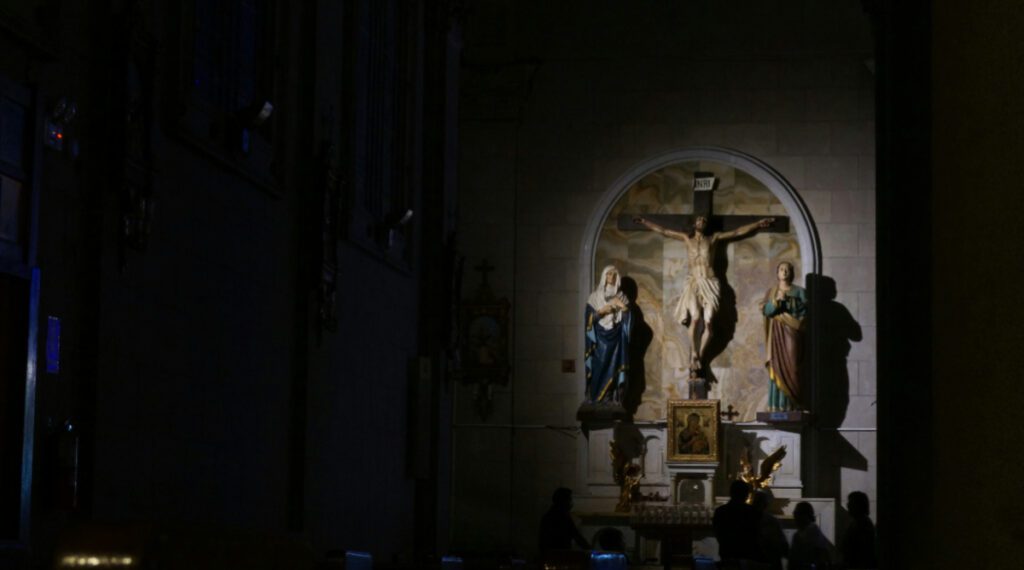Renunciation is the stepping stone to spiritual maturity – but it must be the renunciation that faith knows. All other kinds of renunciation fall short.
We live in a culture that does not believe in renunciation for any other reason than material gain – whether the delayed satisfaction of reward after labor, the moderation of hedonistic impulses out of fear of loss, or simply dietary acts geared to a healthy body or avoidance of allergy. While many are willing to sacrifice their own desires for the one they love, there are very few who renounce good things for the sake of the purely spiritual, or who are willing to suffer inconvenience and discomfort for purely religious convictions. Then, there is the self-made renunciation of those attempting to grasp spiritual results through psychological feats and states of consciousness.
But if these ever lead to true humility, it would seem more by accident than by design, more because the methods and techniques fell short rather than achieve their purpose. There is another kind of renunciation that leads to true humility, that is, the truth about the human heart. This is what the saints, starting with the Virgin Mother of Christ, show us. Their lives unveil a standing with Christ in the shadow of the Cross. Specifically, in the renunciations they make compelled by the love of Christ, they witness even unto death, not only their love for Him but most of all, His love for us.
Let’s start with the first of the saints, the most Holy Mother of the Savior. When Mary said “yes” to the angel, she renounced every other life possibility, everything that was limited by the narrow scope of her own imagination, preferences, and human needs. All of this, she entrusted to the Lord when she uttered “Let it be done to me.”
Moreover, that “yes” involved not only a one-time renunciation of these things but a lifetime choice not to live by them. And this lifetime choice afforded her the freedom to follow her Son. Even in the mysterious distance that he asserts from her throughout the Gospel, she follows Him nonetheless – as if He was teaching her even to renounce the spiritual satisfaction of being honored by Him.
This freedom from not only her “self” but even the honor that she might receive from God culminates in the freedom that she needs as she stands under the Cross in solidarity with his humiliation and sorrow. Even as she stands in this freedom, Christ gives her away and in giving her away as mother, we see the source of all Christian renunciation.
Her renunciation allows Christ to reveal His command over the alienation of death even before His resurrection. The most tender and profound gift He received from the Father, He freely gives away in the moment of agony. In itself, there is nothing good in agony. But when it is filled with love, agony unveils that radical extent to which love suffers evil. The gift of His mother to the Beloved Disciple was a radical act of renunciation, a giving away of what is most dear. It is a movement of the heart that culminates in his last wordless cry – and Mary, who had already entered into this movement of renunciation, magnifies the love that his cry makes known.
In Christ’s renunciation, she who was already without sin has been transformed into perfect praise.
This connection is all about God’s work, the life of grace, the way divine and human freedom come together in Christ’s saving act. The light of God radiates from the soul and into the world not because the soul summoned from itself the renunciation, but because the renunciation itself is already the beginning of a new collaboration with God by grace. This divine collaboration is why St. Paul can say that he is content with weakness and restraint. Every act of renunciation by faith is a revelation of the superabundance of God’s love at work in the world, and every conversion from sin reveals a new grace that flows from Christ’s renunciation at the Cross.
The Virgin Mary, standing at the Cross (standing up straight speaks to the whole mystery of justification, being made upright, and thus is the basic posture for Christian prayer), magnifies this renunciation.
This is what the great saints reflect on when they call Mary the Queen of Martyrs. Take, for example, the spiritual doctrine of St. Elisabeth of the Trinity, a Carmelite nun who died in 1906. This nun who died in obscurity and religious persecution at the dawn of the 20th Century has helped the Church advance devotion to the Trinity more than the many theological treatises and theologians written on the subject. She understood the connection between renunciation and praise — Praise is the radiance of the splendor of God in a soul, the showing forth of His attributes in the world. In her thought, renunciation creates a precondition that allows such a collaboration with God to be realized.
She illustrates this teaching more than attempts to explain it – and her illustration is biblical. She directs our attention to the Annunciation. It is as if she says that implied in Mary’s fiat is a renunciation, and this renunciation already involves the coming together of divine and human freedom. This collaboration between the soul in God leads to the Incarnation of the Word in Mary and in us, it leads to our humanity being transformed into new extensions of His glory in space and time.
In a forthcoming book (Named for Glory, Sophia Institute Press) that I am co-authoring with my friends Fr. Ignatius Schweitzer and Julie Enzler, we ponder this very point. Our effort is to understand the various names that St. Elisabeth believed were attributed to her by God – House of God, Praise of Glory, Host of Praise. We realized that the Virgin Mary is the key to understanding what these mean. We write:
The Mother of the Redeemer witnessed to her Son in a particularly striking way as the lowly handmaid of the Lord, putting God and His will before herself. This way of life is a martyrdom, that is, a witness with one’s whole life. Such a witness is a light that helps others souls find the Savior. Accordingly, St. Elisabeth of the Trinity proposes that the Blessed Virgin” is “a martyr in her heart” who shines with “kindly light,” “the Morning Star” who shines in the heart of her friends. (L 197a)
Mary shines with the light of her Son precisely because she is so selfless and a martyr in her heart. Though she did not need to be purified of sin as her redemption was effected at the moment of her conception, she was nevertheless transformed as she renounced herself to follow her Son. Renunciation gives God space not only to purify but also to transform a soul until it shines forth as his Praise of Glory. Freely embraced self-denial out of love for the Lord is the precondition, the spiritual space in which God cooperates with the soul to fulfill its deepest desires, that is those stirrings of heart that the Holy Spirit causes. In this space, the soul gives God the permission He seeks to remove obstacles to His love, bring into a new wholeness the whole relationship of body, soul and psychological powers, and intensify the Light of His radiance in the spiritual life. This is why St. Elisabeth rightly sees the lowly handmaid of the Lord radiating God even as she gives her fiat in renunciation of all else but God’s perfect will: “I am the handmaid of the Lord, let it be done unto me according to your will” (Lk 1:38).
St. Elisabeth, building her thoughts on the experience of the Handmaid of the Lord, connects renunciation with the radiance of God in the soul. Renunciation is the beginning of praise because praise involves martyrdom, a sacrifice of one’s life for the love of God. In a world that sits in darkness, where hope itself is a precious commodity, we need more of this light. This means the world needs our deeper collaboration with God, a collaboration that begins in renunciation and ends in praise. In the saints, this renunciation and praise come together as an invitation to rejoice in the constraints the following Christ demands and to extend the saving mission of the Lord.
If you would like to learn more about St. Elisabeth of the Trinity, I invite you to come to a conference hosted by St. Joseph’s Seminary in Yonkers, New York.
_______________________________________________________
This post was originally published on Anthony’s Substack and is republished with permission.
Image: Unsplash





